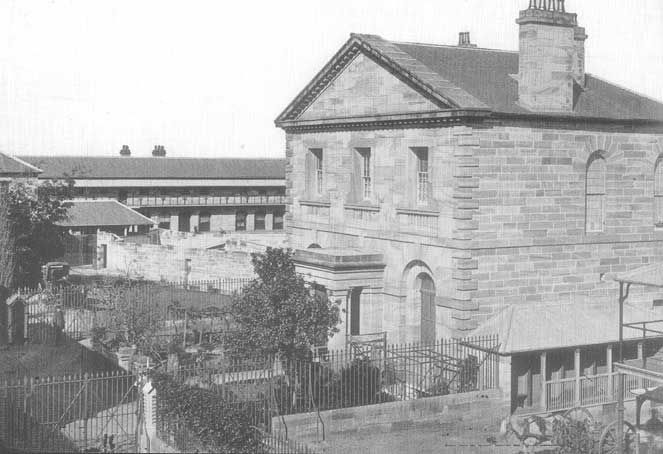
| Years | Parramatta Gaol |
|---|---|
| Pew – 1788 | The Burramattagal people inhabit the area |
| 1788 | Governor Phillip names the district Rose Hill due to its proximity to thrive and lush landscape |
| 1796 | First gaol in Parramatta was built “on the north bank of the river near the south boundary of the present Prince Alfred Park” and was constructed of timber and thatch |
| 1799 | Parramatta Gaol was damaged in a fire. Several convicts were badly burned and at least one died later of his injuries |
| 1804 | Parramatta Gaol building work was completed early 1804 at the cost of £1500 |
| 1807 | Gaol was badly damaged by fire on the 21st December, 1807 |
| 1835 | Planning began for the construction of a new gaol |
| 1836 | Work commenced on a 250 feet square perimeter wall at its present location on the corner of Clifford and Dunlop Sts a short distance from the Female Factory |
| 1836 – 1842 | Building progressed through and resulted in a perimeter wall, governor’s house cum chapel and three of the intended five wings costing £34,168 |
| 1842 | Prisoners were transferred to the site on 15 January 1842 |
| Late 1850s | With better economic times, the gaol area was doubled, workshops and a cookhouse were built, two of the original cell wings were converted to male and female hospital wings |
| 1883 – 1889 | Three additional cell wings were built, largely by prison labor. One of these wings was reserved for prisoners certified insane |
| 1897 | Parramatta was the second largest gaol in the colony, with 364 men and eight women inmates |
| 1899 | all double cells were converted to single cells, electricity was installed, the prisoners’ circumambulatory walks were replaced by physical drill, and a sixth wing was completed |
| 1929 | Parramatta Gaol had become the State’s principal manufacturing gaol, producing boots, brushes, tinware, clothes, joinery and foodstuffs |
| 1940 | Various unsympathetic architectural additions were made to the nineteenth century structure |
| 1970 | Parramatta Linen Service, a large auditorium, and an extension to the 1846 gatehouse were built |
| 1990 | Reception, administration and visitors’ buildings were designed to better match the original sandstone structure |
| 2008 | The Parramatta Correctional Centre |
| 2012 | Parramatta Gaol Closed |
| 2015 |
Deerubbin Aboriginal Land Council in Sydney's western suburbs wins a land claim over Parramatta Gaol, one of Australia's most historic colonial sites. So Parramatta Gaol is now owned by NSW Aboriginal Land Council. https://www.smh.com.au/national/nsw/aboriginal-land-council-wins-parramatta-gaol-land-claim-20150203-134ucr.html |
![]()
Neera Sahni, Research Services Leader, Parramatta Heritage Centre, City of Parramatta, 2021


